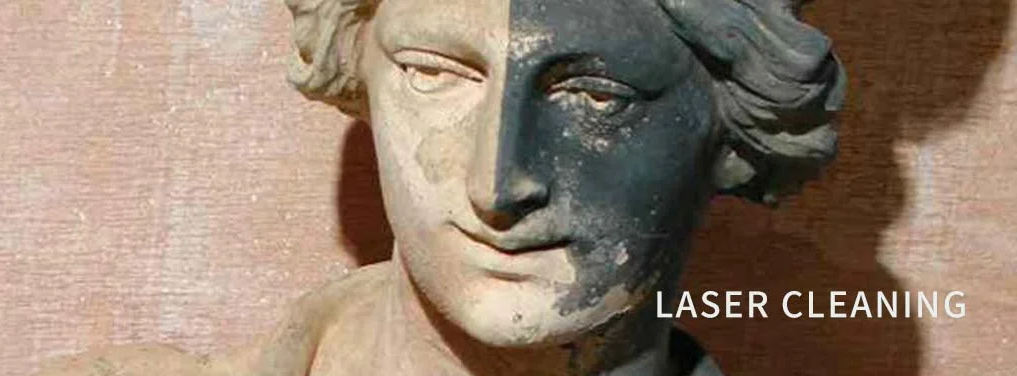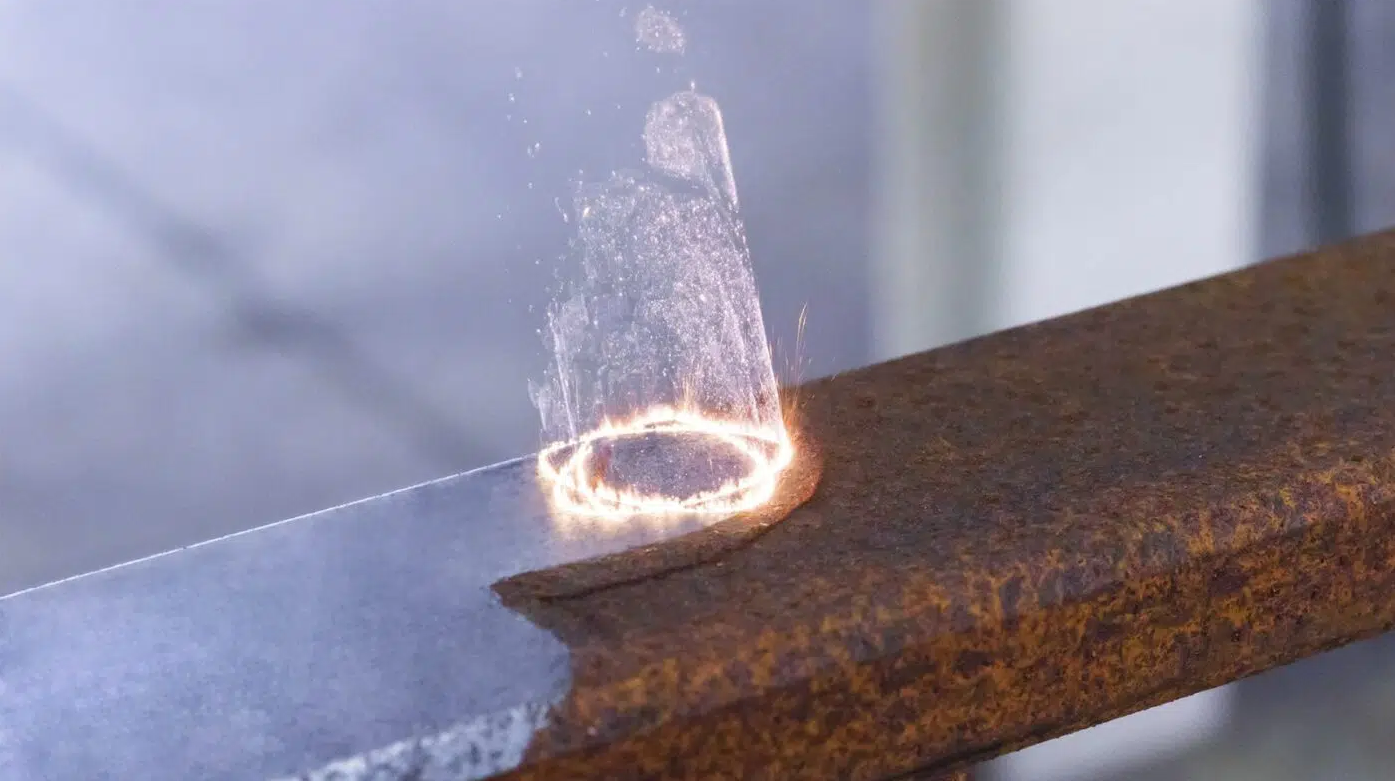I think picking the correct cleaning way is important. It can really help your project. It also helps our planet. Have you thought about cleaning things like metal or plastic? Or even old statues? Maybe you want them very clean without strong chemicals. I believe laser cleaning could be a great option for this. I’ve noticed more people like it. Laser cleaning is kind to surfaces. It’s also good for the environment. But I’ve noticed people often miss one key point about this green cleaning method…
Materials Laser Cleaning Machines CAN Clean
I find laser cleaning machine to be a very adaptable tool to clean many materials. It works for industrial jobs and restoration projects. Here, I’ll show you some common materials that lasers clean well. I’ll also cover their uses and benefits.
Metals: Steel, Stainless Steel, Aluminum, Copper, Brass, Cast Iron
Laser cleaning works effectively on metals like steel, stainless steel, aluminum, copper, brass, and cast iron. It removes rust, paint, oxides, oil, and other residues without damaging the surface. Common applications include rust removal from machinery and vehicles, surface preparation before welding or coating, and restoring old metal items.
Plastics: ABS, PVC, PET, Others
Laser cleaning can be used on plastics like ABS, PVC, and PET, as long as the power settings are carefully controlled to avoid melting or warping. It’s commonly used in the electronics and automotive industries for cleaning molds and restoring plastic parts, helping maintain consistent product quality.
Carbon Fiber Components
Lasers are ideal for cleaning carbon fiber parts in industries like aerospace, automotive, and sports gear. They gently remove resin residues, release agents, and other contaminants without damaging the material—perfect for surface prep before painting, coating, or advanced manufacturing.
Wood
- People use laser cleaning machine for gentle surface cleaning on wood. It can remove paint, leftover bits, or dirt.
- I suggest it for delicate wood restoration. It’s vital to keep the wood in good shape.
Stone and Ceramics
Lasers effectively clean natural stones like granite, marble, sandstone, and limestone, as well as ceramics such as pottery and tiles. They remove graffiti, dirt, moss, and algae while preserving fine details and original designs—great for restoring public statues and stone facades.
Glass and Paper (With Controlled Settings)
You need to set the laser power with care. But, it can clean gunk off glass and special types of paper.
I find this is most common in factory work and special restoration jobs.
Composites
I see laser cleaning machines used a lot for cleaning composite materials. This is true in aerospace, cars, and factory settings. I think this is because it’s a no-touch, controlled method.
Why Laser Cleaning is Good for These Materials
- It’s a no-touch, non-scraping method. So, I notice it causes very little damage to the main material.
- You can be very precise with the cleaning. This protects dainty details and keeps the surface sound.
- I like that it’s good for the planet. You don’t use chemical cleaners, and there’s no extra mess to clean up.
Real-World Examples I’ve Seen
- Fixing up steel bridges by taking off rust and old paint.
- I’ve seen it clean mold from surfaces used for making electronic and car plastics.
- It’s effective for taking graffiti off stone statues and old buildings.
- It helps get copper and brass parts ready for putting electronics together.
- Taking oxidation off aluminum car parts.
- It cleans unwanted stuff from carbon fiber parts on airplanes.
Materials Unsuitable for Laser Cleaning Machines
Laser cleaning machine doesn’t work for all materials. In my experience, some materials just can’t handle the laser’s heat, the way it removes material, or the side effects it creates. If I try to use a laser on these materials, I know it can cause serious damage, create health risks, or the cleaning might not work at all.
Hazardous and Unknown Materials – My Strong Cautions
Asbestos-Containing Components: I strongly recommend against using lasers on parts with asbestos, like brake pads, clutch discs, or gaskets. It’s very dangerous. I know lasers can release dangerous fibers and toxic fumes into the air. This poses serious health risks.
Unknown Materials: If I don’t know what a material is made from, I consider laser cleaning too risky. From my perspective, unexpected reactions could damage the material or produce harmful byproducts.
Materials That Emit Harmful Fumes – A Key Concern for Me
Toxic Fume-Releasing Polymers: I’ve observed that some plastics and composites, particularly those with halogenated additives like PVC, release corrosive or toxic fumes when a laser hits them. I believe this puts both people and equipment at risk.
Low-Melting Point Plastics and Rubbers – My Observations
Sensitive Plastics and Rubbers: In my experience, many plastics and rubbers with low melting points, or thin ones, cannot withstand the heat from the laser ablation process. I find they often melt, warp, or release dangerous substances. This makes the surface unusable.
Data, Cases, and My Recommended Practices
- From what I’ve seen in industrial uses, people prefer laser cleaning machine for metals, ceramics, stone, and glass. Surveys I’ve reviewed indicate that organic materials, those with asbestos, and heat-sensitive ones are usually avoided for safety and practical purposes.
- Based on my experience, I strongly advise never to try laser cleaning on organic materials, most types of paper, plastics that are fragile when heated, or any item I suspect might contain hazardous additives.
- I recommend conducting small spot tests and carefully adjusting parameters. This is important even for materials that might seem suitable, before you try to clean a large area.
- I want you to be aware: laser cleaning works very well on hard inorganic materials. However, if I were to use it on sensitive or unknown materials, it could cause permanent damage, create health threats from fumes, or lead to unsafe chemical changes.
Materials Requiring Special Care with Laser Cleaning Machines
For laser cleaning machine, I find some materials need extra care. This is because they are sensitive or have special properties. I believe selecting the correct laser settings and safety steps is vital. This helps you avoid damage or health problems.
Sensitive Plastics and Polymers
I’ve seen many plastics and polymers melt, change shape, or release nasty fumes from intense laser heat. Thin films, soft polymers, and plastics that melt easily are quite vulnerable. If you decide to clean these, I suggest using the lowest effective power and short pulses. Always test a small spot first. You absolutely need good airflow to get rid of any toxins. This is important if the polymers have halogenated additives.
Rubber Materials
In my experience, rubber acts a lot like plastic with lasers. High heat often makes it break down, char, or stop working well. If you don’t have a very specific reason and haven’t tested it a lot, I strongly suggest using other ways to clean most rubber things.
Reflective and Polished Surfaces
From my perspective, mirrors and shiny metals present two problems. You might get less cleaning power, and reflected laser beams can be dangerous. Before you start cleaning, I recommend you use a fiber laser. Or, use a setup made to lessen reflection risks. I always tell people to wear protective gear. Also, think about using beam containment systems for these kinds of materials.
Natural Fibers and Delicate Fabrics
In my view, silk, wool, and similar natural fibers just can’t take the laser’s heat. These fabrics might burn, change color, or get weaker, even if the laser settings are low. I’d say, if you can, don’t use laser cleaning machine on these materials. Old-fashioned cleaning methods are often safer.
Glass, Rubber, and Plastics with Special Needs
I know that for glass, rubber, and some plastics, you can clean them with a laser. But, you need the correct wavelength, power, and scanning speed. I recommend a pulse fiber laser because it gives you better control. And, always do a test clean on a small, hidden spot first. With glass, I advise you to look closely at the edge quality. Also, watch out for any cracking or clouding.
My Best Practices for Special Materials
My advice for best practices with special materials: – I always set the laser’s parameters for the specific material I’m working with. – I think about using short pulses and lower power. – I always test clean on an unseen area first. – I make sure the work area has good ventilation. – I use the right safety gear. This is very important for reflective surfaces. – If I feel the risk or uncertainty is high, I choose a different cleaning method.
Sometimes, even if you follow these steps, I find the safest choice is to avoid laser cleaning. If I’m dealing with materials that are sensitive, valuable, or unknown, I prefer to be cautious. In these cases, I recommend talking to a laser cleaning specialist or picking cleaning methods that are already known to work well.
Summary
My experience with laser cleaning makes me excited for its role in eco-friendly production. Laser cleaning doesn’t work on all materials. But I find its accuracy, green benefits, and adaptability make it a great solution for current cleaning needs. I suggest using it with care. Based on my experience, always test first. Use the right settings. And I believe safety is most important. I think knowing its strengths and limits helps us get the most from laser cleaning. This also protects our planet and us. For more details about laser cleaning machine or to get a quote, contact us today!





Recent Comments